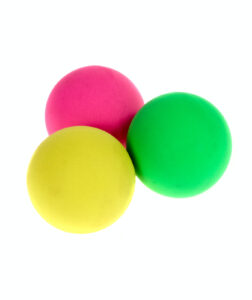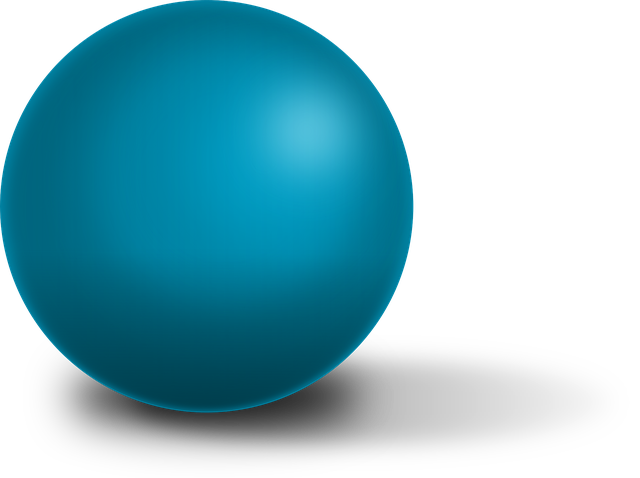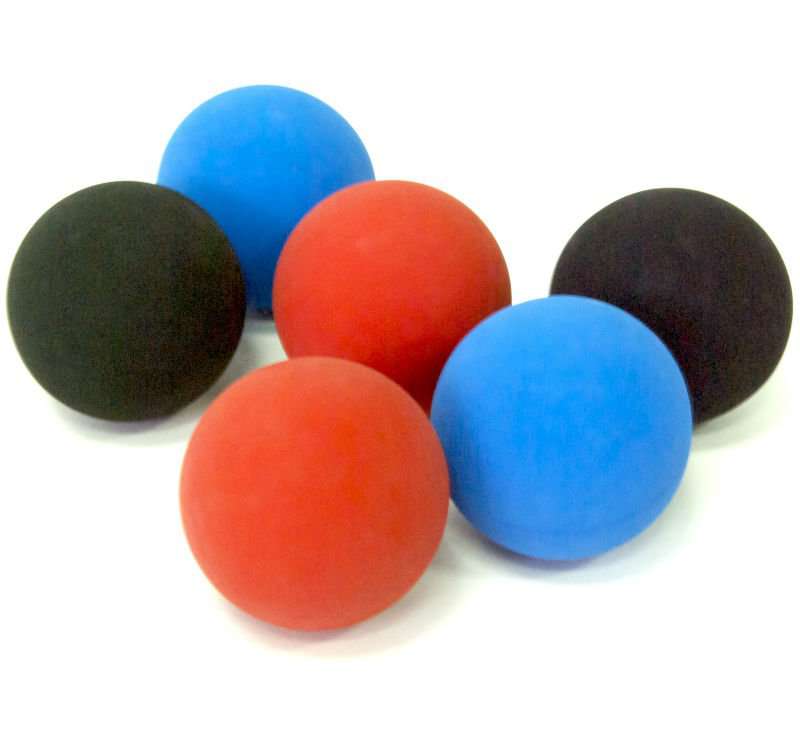In many ball sports, color is simply for aesthetic reasons so you can look good when you’re playing.
In racquetball, that’s not the case because the ball’s color has a specific technical meaning.
A Racquetball’s color matters. The color of a racquetball determines the class of competition it is used in. Balls in the racquetball game are categorized by color to denote the ball’s bouncing strength, hence its speed, as it hits the court walls. The ball’s color also inadvertently tells you about its durability. Racquetball is also played both indoors and outdoors. Balls for indoor or outdoor play are also differentiated by color.
In this post, we look at the purpose of color in racquetball balls.
We will also briefly outline the common ball colors, what they mean, and the class of competition they are recommended for.
Let’s get started.

Why are racquetballs different colors?
The ball’s color corresponds to certain manufacturing specifications unique to that ball. Click here to learn more about the manufacturing of racquetballs.
By simply looking at the color of the racquetball, you should be able tell its properties. Period!
The racquetball color tells you the type of ball and the class of competition it’s optimized for.
The variety of colors of racquetballs broadly serves two purposes.
First, the color indicates the speed and bouncy dynamics of the ball. Irrespective of color, a new ball bounces faster than an old one, but faster balls do not last.
Second, the colors aid in ball visibility when played in different lighting conditions.
The Racquetballs color chart categorizes the balls, starting with the slower ball types, then the medium-paced balls, and then the fastest ones at the end of the color-speed range. The slower type balls are recommended for beginners, amateurs, and seniors. The fastest balls are used by professionals and in fast-paced competitions.
Next, we briefly review the common colors of racquet balls and what the colors mean technically.

What colors do racquetballs come in?
The commonest racquetball colors are six. The seventh variation is that of multicolored balls.
Black racquetballs
When it comes to speed, black racquetballs are the slowest. Their use results in longer rallies. They are used at some competitions because they’re durable. Their slow court speed makes them best for recreational players and seniors. Black balls last longer than all the other colors.
Blue racquetballs
Blue racquetballs are manufactured for medium-speed activities. Blue balls are the most commonly used racquetball. Recreational and amateur players use this type of ball.
Green racquetballs
Green Balls are optimized for indoor play. They are as fast as the purple balls but more durable.
Purple racquetballs
The purple ball, in particular, the Pro Penn HD, is sort of the standard ball for professionals. It’s the official ball of the Ladies Professional Racquetball Tour tournaments and the International Racquetball Tour (IRT).
Red racquetballs
Whereas most other ball colors are for indoor purposes, the red ball is the primary ball for outdoor racquetball. It’s also the fastest. Even though it’s sometimes used indoors, it’s unsuitable because the color of the ball and the walls tend to blur together at high speeds. This occurs especially against white walls making the ball’s visibility difficult.
Pink racquetballs
Indoor players who prefer a fast ball should consider playing with the pink ball instead of the red one. These balls are very fast like the red balls are, making the lifespan of pink balls short.
Multicolored racquetballs
These racquetballs have two colors. The color combination makes them highly visible.

What is the right racquetball color for me?
After understanding the purposes of color in racquetballs other than making them visually appealing, you are probably wondering which racquetball color suits you best.
Note there are no hard ball color rules for either pitch type in recreational circumstances. But in competitions, the fastest balls are used, and ball selection depends on the court type.
Below are several factors to consider;
Your skill level
You can start with the slow-paced black ball if you are a beginner. As your skill sets improve, proceed to play using the other balls made for speed.
Choose the blue or green balls when you graduate to the amateur level. Black balls are best for longer rally recreational or practice activities or sessions. This logic also applies to seniors whose workout speeds are slow-paced.
Once you become more skillful at the game of racquetball and wish to play a faster-paced game, go for purple, red or pink balls.
Indoor and outdoor court considerations
Indoor and outdoor court playing conditions differ. Outdoor balls need to be highly visible under sunlight. Some ball colors suitable outside are not very visible on indoor courts with artificial lighting. If outdoor ball visibility is important for you, go for red or multicolored balls optimized for outdoor conditions. Most of the other colors are best indoors.
Ball’s lifespan
Continued use of a ball combined with the help of the forces of nature makes the ball worn or what is called “dead”. With tear and wear, they lose thier bounce over time.
Faster type balls break faster than slow-speed balls. If you are concerned about the ball’s bounciness like the professional players are, the rule of thumb is to replace worn balls, especially the pink and red balls, after 3-5 games.
If your budget does not allow you to replace balls often, go for slow to medium-speed balls. Choose black or blue colored balls that are more durable.

What can I tell about a Racquetball by looking at its color?
The different racquetball colors serve more than aesthetics. Racquetball colors have specific purposes.
They indicate the properties of each ball. Specifically, the colors of racquetball signify the bouncing characteristics of the ball as it hits the court surfaces. Essentially, the bounciness determines the speed of the ball.
By simply looking at the ball color, you should tell if it’s a slow, medium, or fast-paced ball. That way, anyone who plays at various racquetball competition levels easily knows the type of ball best suited for them.
Colors also serve the visibility purpose. Racquetball is an indoor and outdoor game, unlike squash which is strictly indoor. A ball that’s visible in indoor courts may not be visible under sunlight. Thus red and multicolored racquetballs are designed and color optimized for outdoor competitions.
These are the reasons racquet balls are different colors.
Click here to learn more about the differences between a Racquetball ball, a Squash ball, and the American Handball.
In 2022, the Gearbox Sleek Black Ball was named Racquetball Canada’s Official Ball and is used in all sanctioned tournaments across Canada.


starzbet
child porn
child teen